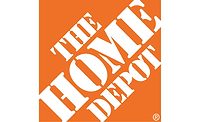How In-Store Financing Can Boost Flooring Sales

Are you leaving potential flooring sales on the table, so to speak?
Evidence suggests that flooring dealers may be missing out on sales because they are not optimizing their in-store financing program. By contrast, dealers who vigorously promote in-store credit may see average ticket sales jump significantly.
Synchrony’s Sixth Annual Major Purchase Consumer Study revealed that customers with Synchrony store credit cards spent an average of 53% more than customers who didn’t have a card. Those customers also are likely to be more satisfied with their purchase because they got the flooring they really wanted.
“Flooring is a big purchase for most homeowners,” explained Jeff Surratt, senior vice president, home specialty, Synchrony, a leading provider of consumer financing services. “The cost factor alone causes them to hesitate. According to our Major Purchase Consumer Study, only 61 percent of major purchase shoppers who did not use Synchrony’s financing offers were even aware that their retailer had a financing program. That means nearly 40 percent of potential buyers didn’t know they could finance their purchase at the store.”
Consider the Facts
Consumer statistics from HomeAdvisor.com indicate that the average cost of installing new hardwood flooring is about $8,000 for 1,000 square feet, depending on the quality of materials and where you live in the U.S. Carpet and laminate flooring could be about half that amount, again depending on quality and location.
That’s a lot of money for the typical homeowner, so it is natural to assume there is some sticker shock when they are choosing new flooring. Given the price, many consumers choose less expensive flooring or decide to replace fewer square feet of old flooring. This can lead to diminished consumer satisfaction—the customer will not get the quality or look they really want. This is frustrating for the buyer and the seller alike.
The fact that so many potential buyers are unaware of in-store financing options may mean the store is not promoting their credit program effectively. As a result, the store loses out on potential profits, a bad formula for long-term retail success.
Make It Known
“Consumers love options, including payment options,” said Surratt. “Dealers should make a concerted effort to promote their financing programs. This includes telling the consumer early in the sales conversation. This allows them to dream bigger. Perhaps they will realize they can afford better quality flooring if they have the option to pay for it over time. Financing expands their vision as to what is possible within their budget.”
Making customers aware of your financing program starts with advertising and marketing. Make sure financing information is featured on your website, in your advertising and at the point of sale. Then train your sales team to mention financing early and often in the conversation. Customers often rely on the salesperson for this valuable information.
“According to our consumer study, roughly 70% of our cardholders found out about in-store financing from the sales associate,” Surratt said. “Many customers will walk away without making a purchase if they don’t know about your credit options or they are somehow confused by the offer.”
Train Your Team
It’s essential that your sales team be knowledgeable and informed about all current financing offers. Credit providers such as Synchrony offer online instructional programs to help dealers train their staff to use financing more effectively. Ongoing training will help your floor sales team become more comfortable with financing vocabulary so they can explain credit offers clearly and accurately to customers.
If you have never provided credit training, perhaps it is best to start with some words and phrases that often come up when discussing credit. While some people may be very knowledgeable of financing vernacular, others may be confused by these phrases and are embarrassed to ask. It’s best to make sure everyone on the sales floor has a comfort level with the topic. Here are some of the most common financing phrases you are likely to hear:
- Annual Percentage Rate (APR) – the interest rate charged annually for borrowing money. It is expressed as a percentage that represents the actual yearly cost of funds over the term of the loan.
- Credit Rating or Credit Score – A number, assigned by a credit bureau, that indicates your ability to repay a loan. The scoring model weighs several factors, including payment history and current debt.
- Deferred Interest – interest that accrues on a purchase during the promotional period. The interest is assessed if the purchase is not paid in full within the agreed-to promotional period. Minimum monthly payments are required.
- Equal Payment, No Interest – no interest is assessed on a purchase and equal monthly payments are required until paid in full. The payments are a fixed percentage of the initial purchase amount.
- ‘No Credit’ Loans – a loan in which the lender does not conduct a credit history check, usually because the borrower may not qualify for an unsecured loan. These loans typically have higher interest rates than revolving loans.
- Revolving Credit – a line or amount of credit that is automatically renewed as debts are paid off. A credit card is a revolving line of credit.
- Terms and Conditions – the agreement (contract) between the borrower and lender includes a description of the payment obligations and duration of the loan period.
- Unsecured Credit – not secured by collateral. Car loans and home loans are secured credit. Most credit cards are unsecured credit.
Change the Conversation
It can be difficult for consumers to focus on style and quality when they hear the price tag for new flooring. It helps significantly if your sales team can change the conversation. New flooring is not about cost, it is an investment.
The fact is, most Americans want to invest in their homes, for both aesthetic and financial reasons, and they are likely to invest more if they have access to in-store financing. A recent survey from HomeAdvisor.com revealed that American homeowners who did remodeling projects in the past year spent an average of $6,649. Clearly, remodeling and redecorating is an enormous segment of our national economy, as evidenced by companies such as Synchrony, which recently introduced the Synchrony HOME credit card which is accepted at thousands of retail locations. The card is specifically for home improvement, decor, appliances and home furnishing purchases.
Beautiful flooring enhances the value and appeal of any home. Quality materials will likely last longer and require less maintenance. Nice floors will almost certainly increase the homeowner’s satisfaction with their purchase. These are value propositions your sales personnel should use when discussing flooring and financing options.
Financing helps give the customer more options. Ultimately, it helps them make their decision based not just on budget, but also on design tastes and desires. But unless you inform them about financing, they won’t have those options and you may lose the sale.
Looking for a reprint of this article?
From high-res PDFs to custom plaques, order your copy today!









